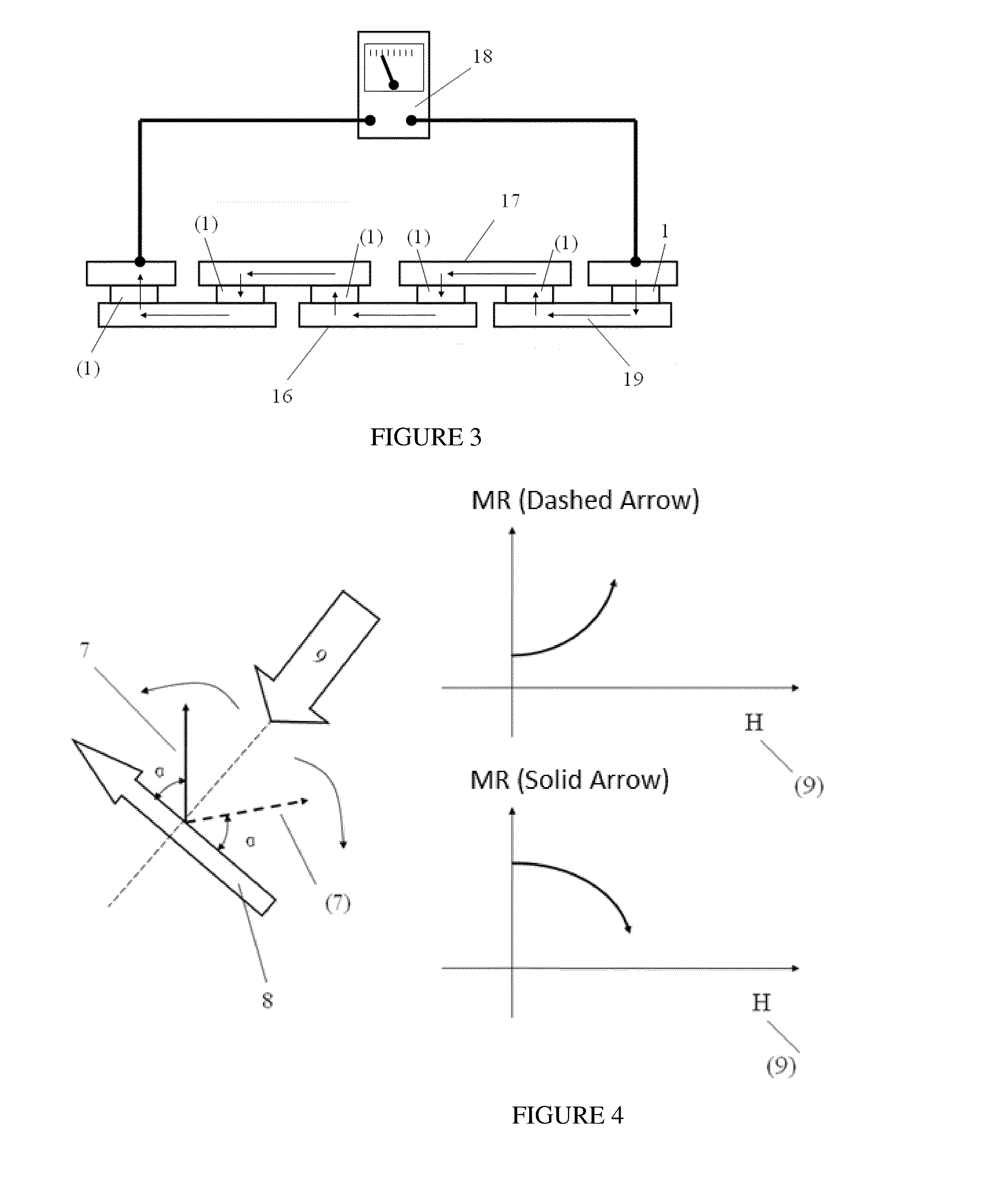Single-chip push-pull bridge-type magnetic field sensor
a push-pull bridge and magnetic field sensor technology, applied in the field of single-chip push-pull bridge magnetic field sensor, can solve the problems of affecting the deposition of the first film, affecting the overall performance of the sensor, and not being ideal for manufacturing
- Summary
- Abstract
- Description
- Claims
- Application Information
AI Technical Summary
Benefits of technology
Problems solved by technology
Method used
Image
Examples
Embodiment Construction
[0031]With reference to FIGS. 1-13 below, preferred embodiments of the present invention will be described in detail so that the advantages and features of the present invention can be more easily understood by a person skilled in the art, and thus more clearly defining the scope of protection of the present invention.
[0032]FIG. 1 illustrates a standard MTJ element. A standard MTJ element 1 comprises a magnetic free layer 6 and a magnetic pinned layer 2, which are separated by a tunnel barrier layer 5. The free layer 6 is made from a ferromagnetic material, and the magnetization direction of the magnetic free layer 7 can change in response to a change of the external magnetic field. The pinned layer 2 magnetization direction does not change, and it is set into direction 8. A magnetic pinned layer is often comprised of antiferromagnetic layer 3 above or below a ferromagnetic layer 4. The MTJ structure is usually deposited on the conductive seed layer 16 and it is capped with an elect...
PUM
 Login to View More
Login to View More Abstract
Description
Claims
Application Information
 Login to View More
Login to View More - R&D
- Intellectual Property
- Life Sciences
- Materials
- Tech Scout
- Unparalleled Data Quality
- Higher Quality Content
- 60% Fewer Hallucinations
Browse by: Latest US Patents, China's latest patents, Technical Efficacy Thesaurus, Application Domain, Technology Topic, Popular Technical Reports.
© 2025 PatSnap. All rights reserved.Legal|Privacy policy|Modern Slavery Act Transparency Statement|Sitemap|About US| Contact US: help@patsnap.com



